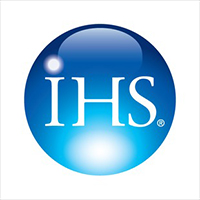
Hot Prospects for Building Analytics in the Middle East and US
 IHS Inc. forecasts the global market for building analytics used in intelligent buildings will be worth nearly $50 million in 2016. Major drivers of the building analytics market include: legislation and certification for both commercial and government buildings; monetary incentives for green buildings; potential energy savings; and reduced maintenance and servicing costs. Furthermore, it is anticipated that building analytics will increasingly be used in conjunction with demand-response as a means to more efficiently reduce the energy consumption of a building without adversely affecting occupants.
IHS Inc. forecasts the global market for building analytics used in intelligent buildings will be worth nearly $50 million in 2016. Major drivers of the building analytics market include: legislation and certification for both commercial and government buildings; monetary incentives for green buildings; potential energy savings; and reduced maintenance and servicing costs. Furthermore, it is anticipated that building analytics will increasingly be used in conjunction with demand-response as a means to more efficiently reduce the energy consumption of a building without adversely affecting occupants.
“The market for building analytics is currently in the initial stages of development,” said Sam Grinter, market analyst. “Early adopters in the Middle East, the U.S. and Australia have been quick to take advantage of the benefits offered by these solutions. These geographic markets will continue to be key-growth areas for building analytics over the next four to five years.”
Sustainable, value-added services, such as building analytics, are currently being supported by local governments and businesses in the Middle East and U.S. For example, the Emirates Energy Star is a certification body that hands out awards on the basis of a building’s energy savings. Meanwhile, the U.S. General Services Administration (GSA) is also taking advantage of the $4 billion Green Building Initiative announced by President Obama in 2011.
“Legislation will be a crucial factor in driving wider global adoption of building analytics,” Grinter added. “Other countries will likely follow Australia’s lead in implementing measures such as the carbon tax, thus making the energy consumption of buildings a key concern for building owners.”
While the building analytics market is still in the very early stages of development, it presents a good opportunity for investment in what otherwise is a relatively conservative industry. For building analytics to see widespread adoption, nationwide legislation aimed at reducing energy consumption will have to be implemented, and the potential benefits of using building analytics must be clearly presented to building owners and key decision makers.